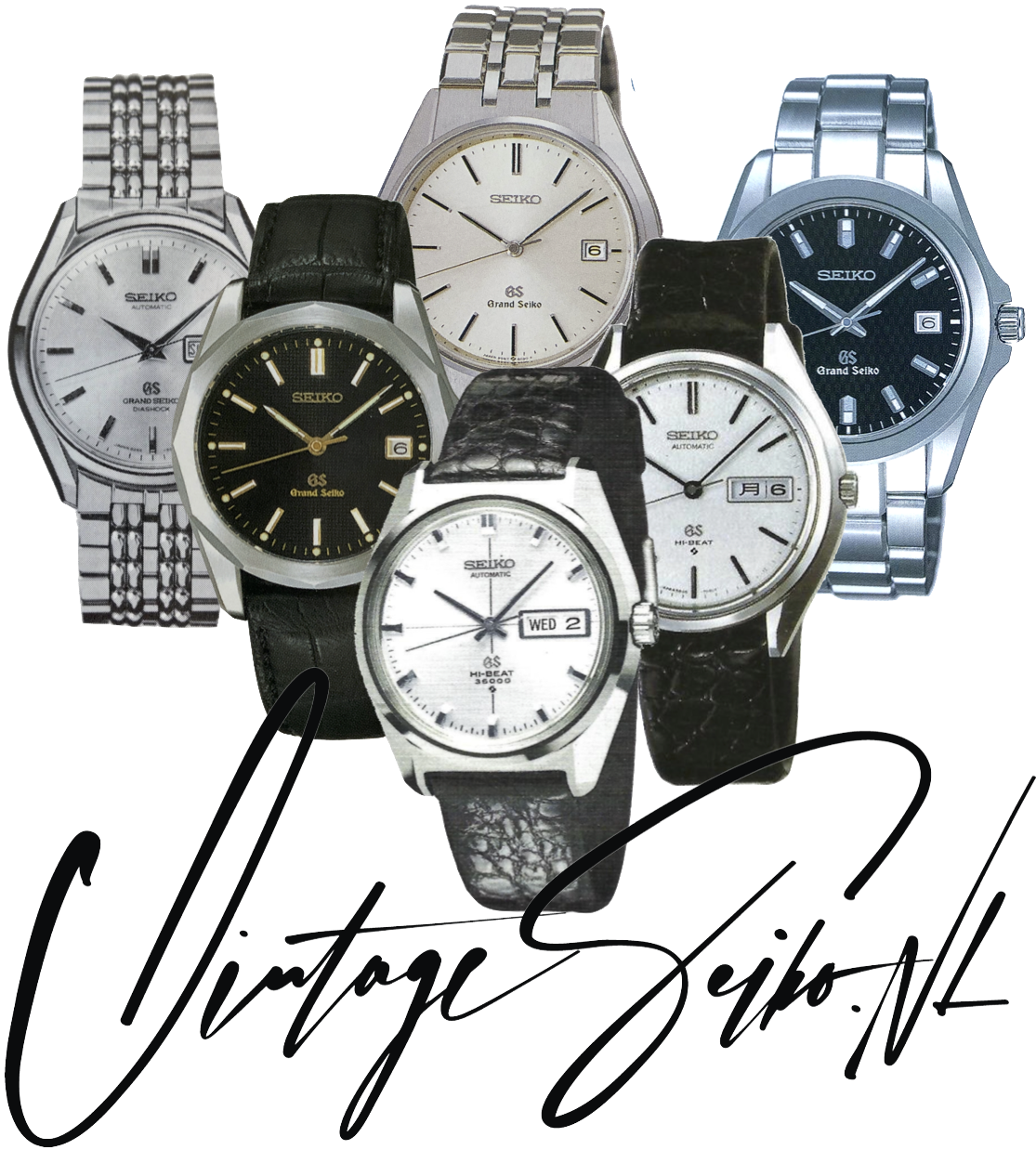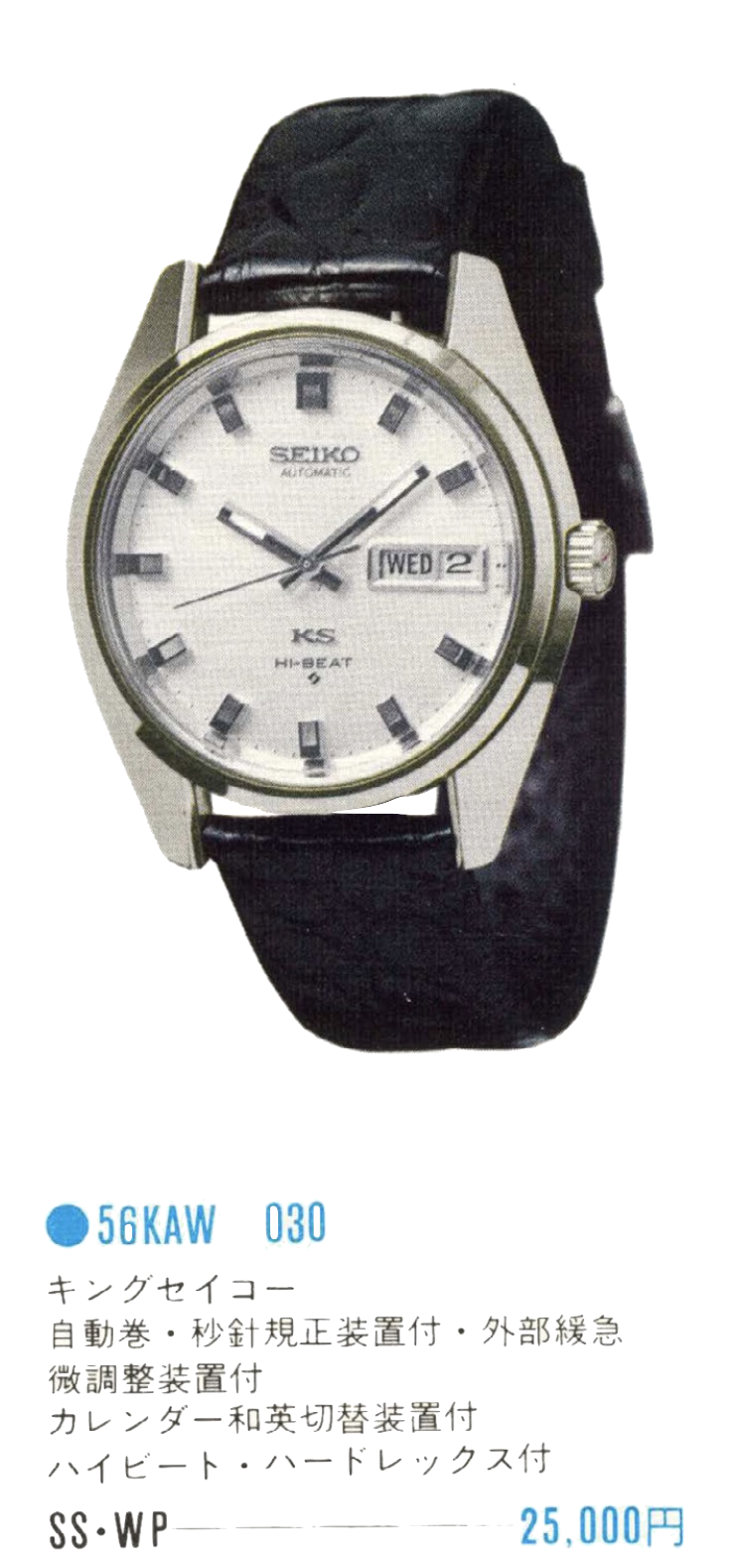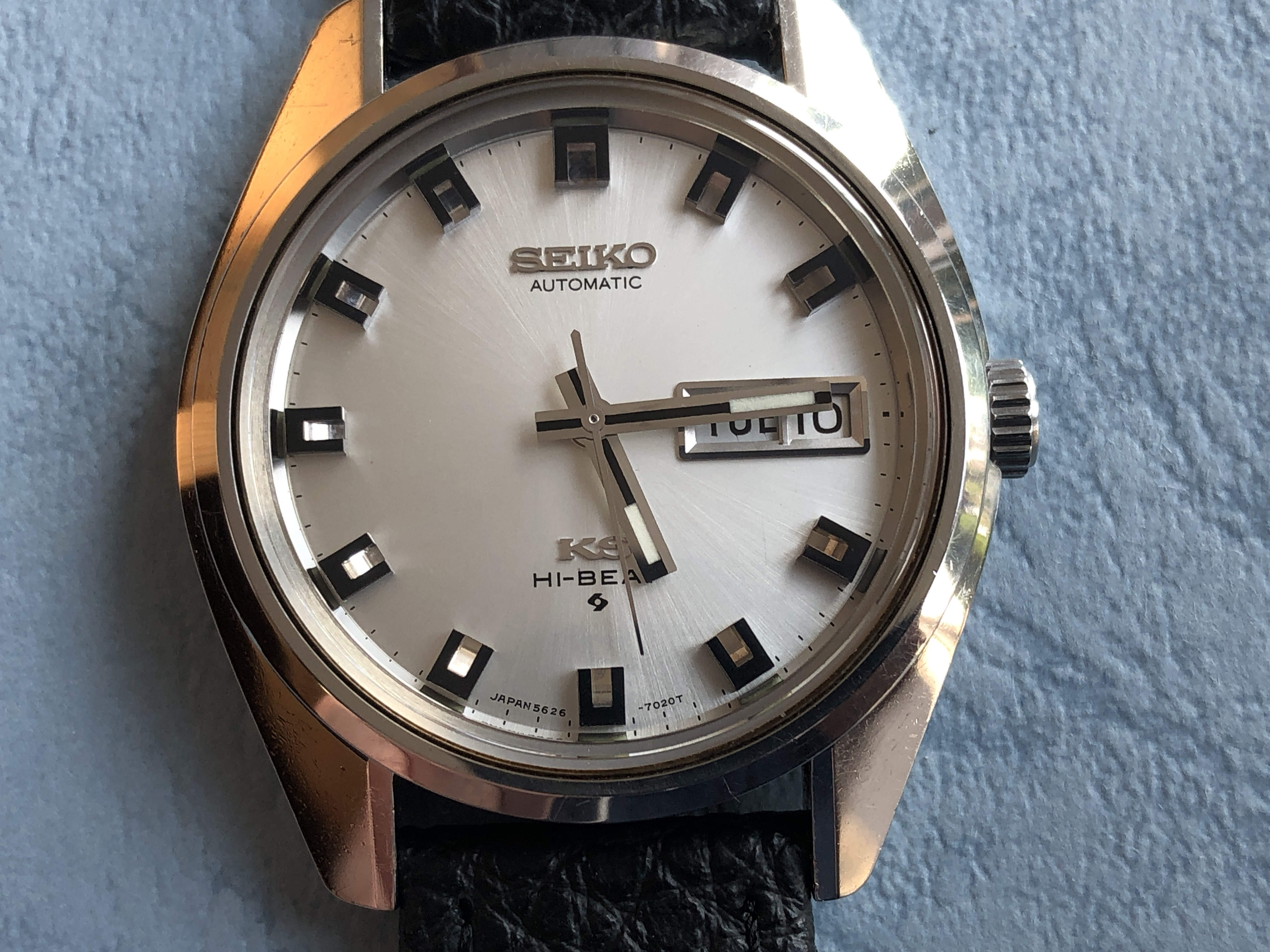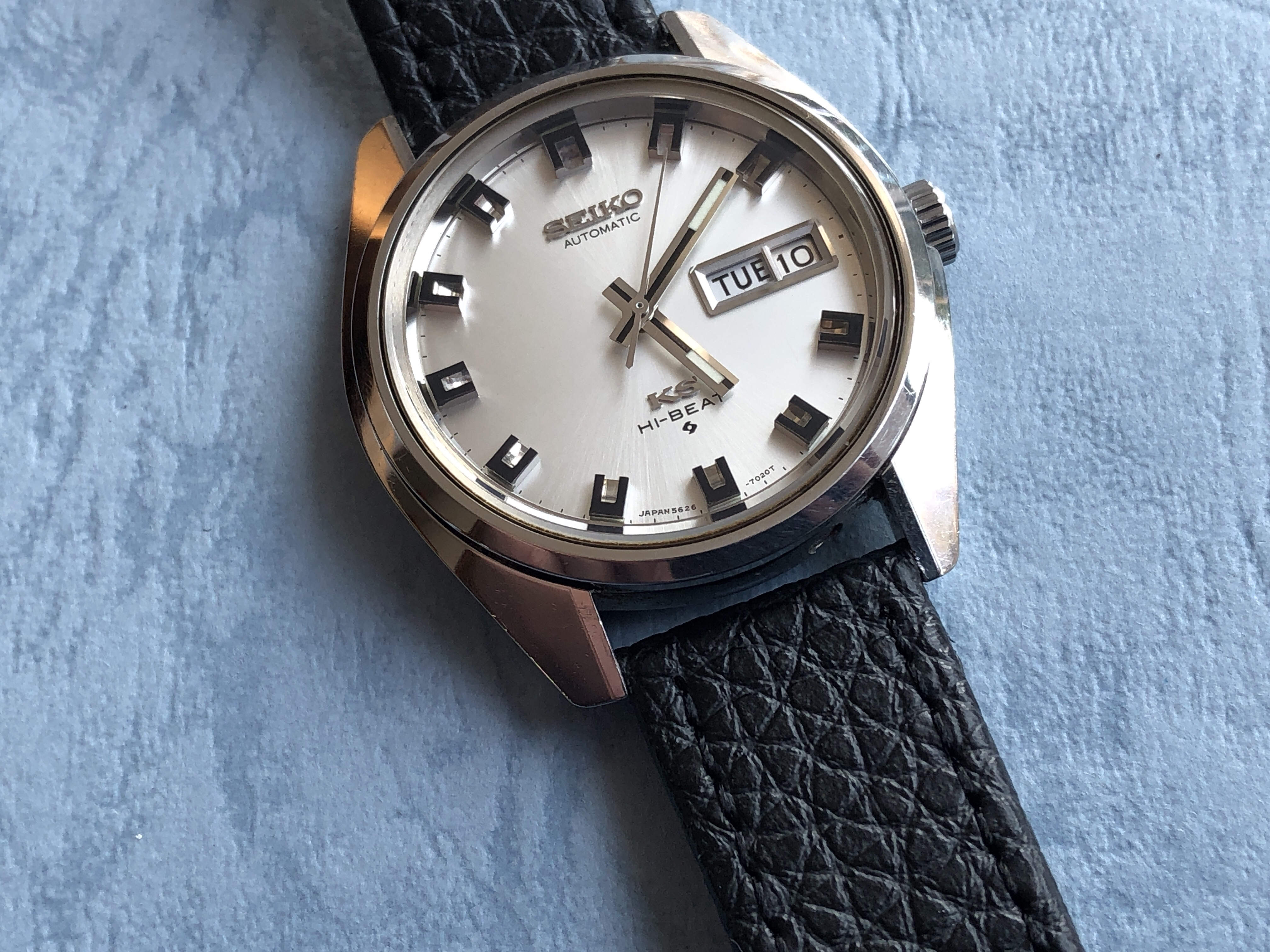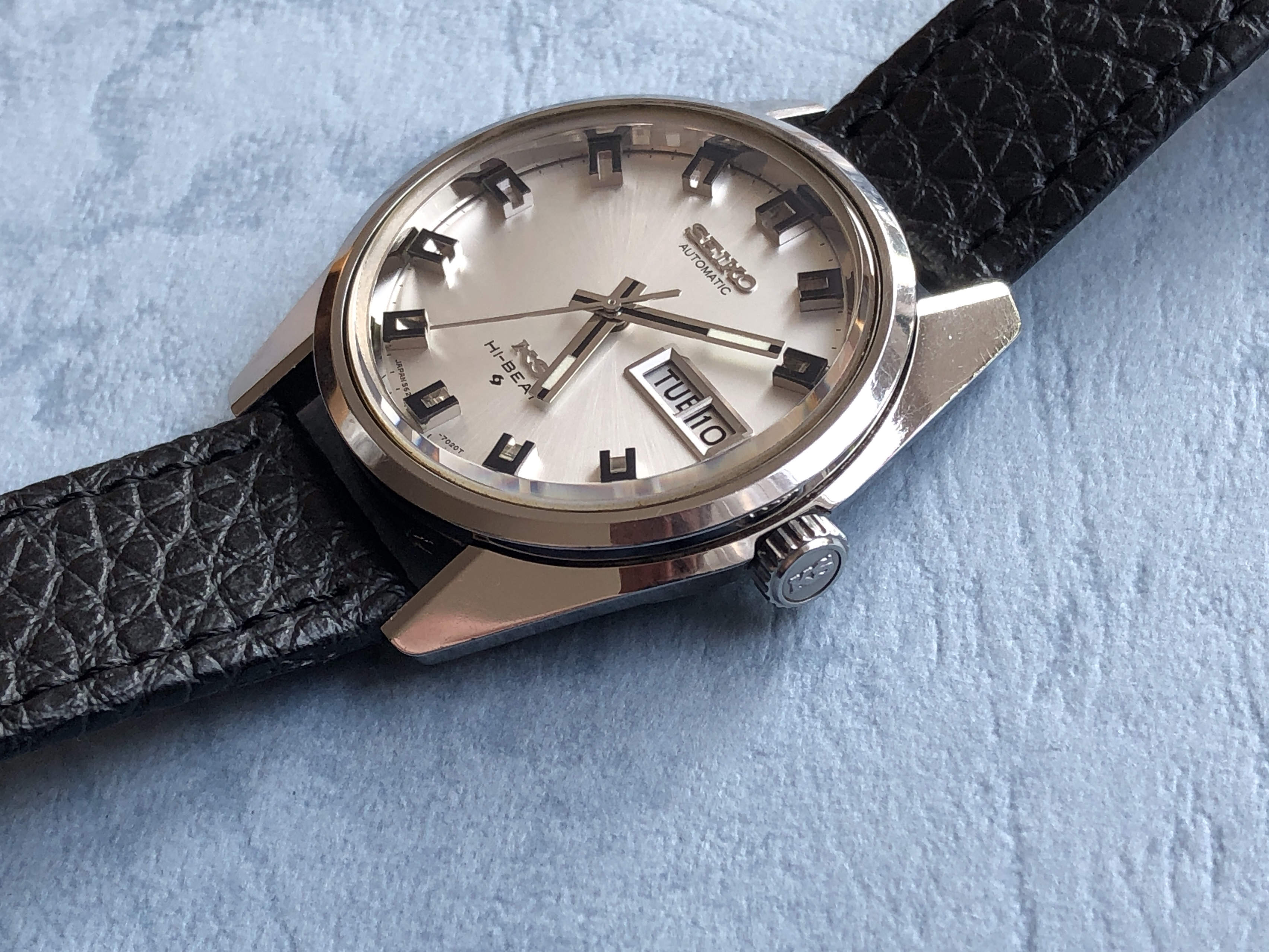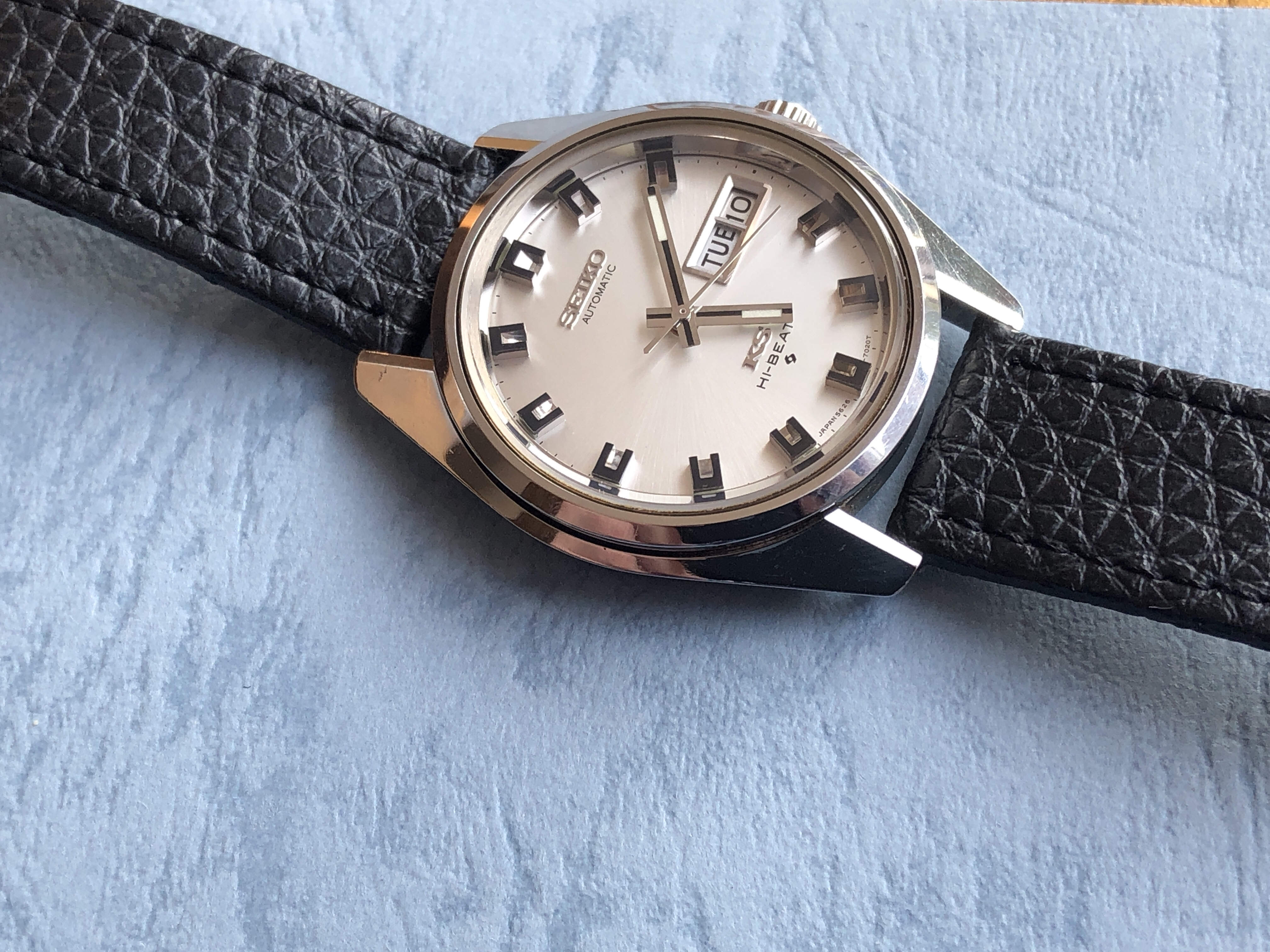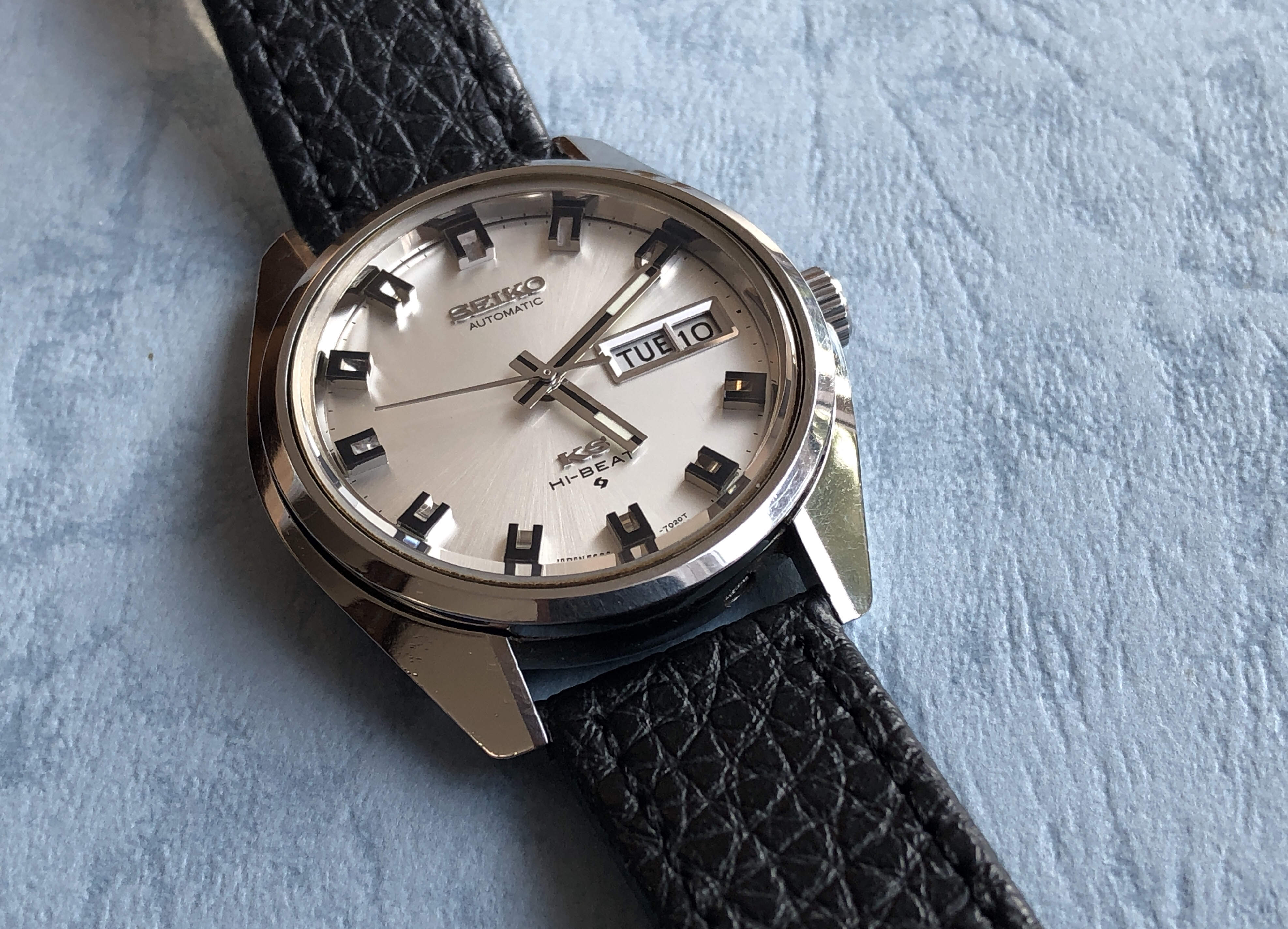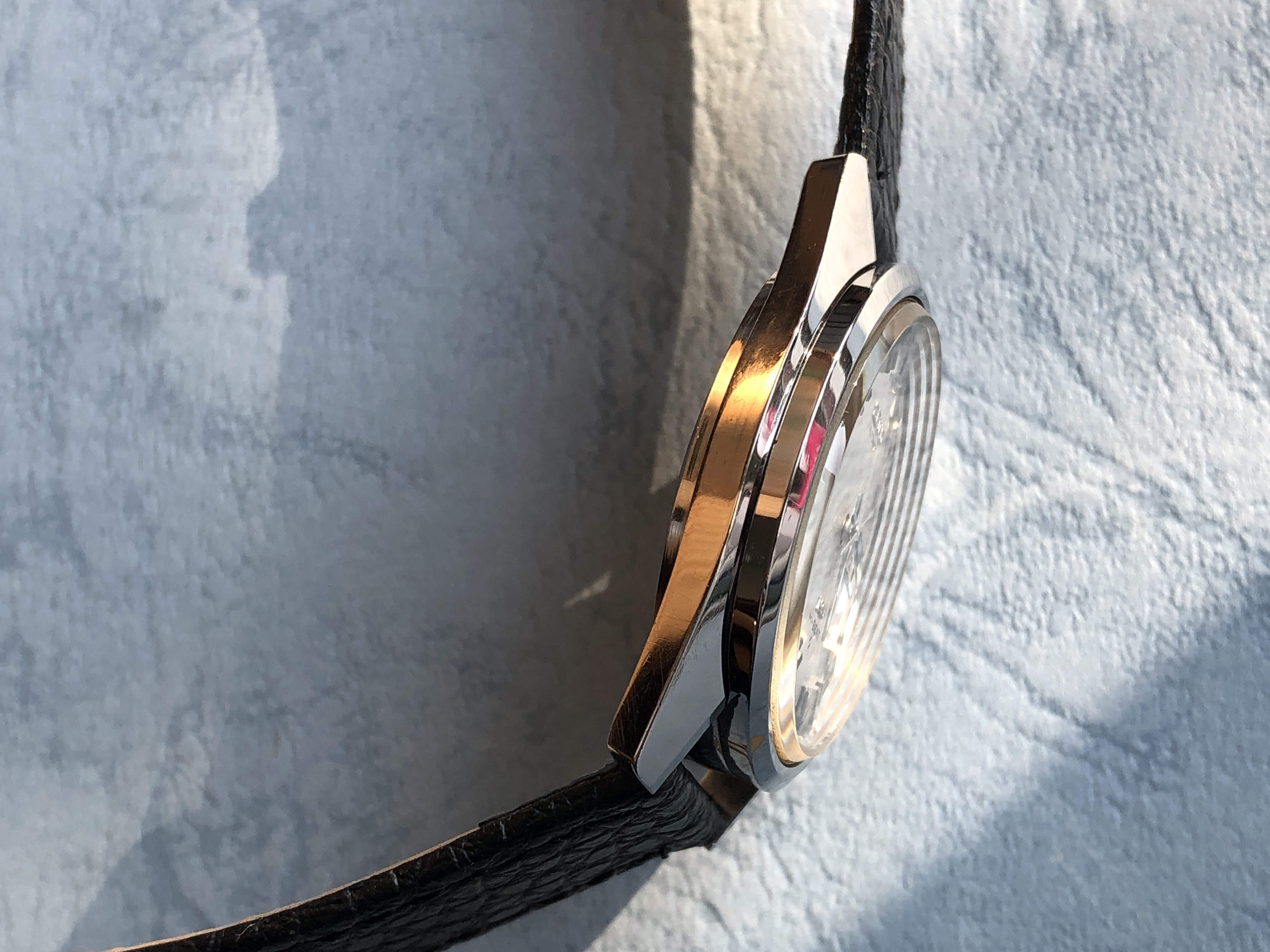
King Seiko 5626-7000 (Sold)
€ 845.00
Sold out
This watch is a King Seiko unicorn, it took years to find one in pristine condition. As a typical design of the late sixties it has block style indices, but is pure unadulterated Tanaka as far as the case design is concerned - with some katana edges applied as well.. It is a samurai blade on the wrist. Well, two actually... one on each side of the dial!
| Manufacture | Seiko |
|---|---|
| Model | King Seiko |
| Reference | 5626 7000 |
| Original retail price | 669 euro |
| Movement | Automatic |
| Serial No. | 01XXXX |
| Case | Stainless Steel, 37x42x11mm |
| Crystal | Original Hardlex |
| Dial | White Sunburst |
| Bracelet | Leather |
| Lugs | 18mm |
| Production | 1970-01 |
| Condition | Excellent |
| Service | 10-2019 full service, NOS crystal |
| Box | No |
| Papers | No |
The first automatic King Seikos were the 5626-7000 KS and the 5626-7040 KS chronometer, grandly decorated with gold medallions on the case back. The design of the 7000 is clearly based on the manual-wind 45 caliber King Seiko, however it features a one-piece monobloc, opened by removing the bezel and glass rather than a screw-back. Also, perhaps more importantly, it has an external regulator, accessed via a small screw between the lower lugs. The 7000 and the 7040 seem to have been produced in fairly large numbers for the Japanese market between 1968 and 1971, the 7040 being the most widely produced chronometer model.
Now, here is where it starts to get interesting. There are some rare design variations, other than the regular 7000/7040. One can find maverick kings! They come with the same 7000 indication, as in this example, but with stubbier indices, hands and sometimes multi-surfaced lugs. Other evidence of these kingly escapades is given by the cushion-type, the square, or the otherwise fashionably 70s case. However, one of the most interesting cases (pun intended) might be the “Blocky” 7000 of the late sixties.
This one adheres fully to Tanaka's Grammar Of Design and fits right in between the glitzy KS 562x Vanacs (colourful dials, chunky hands and hour markers and faceted crystals, but never medallions) and the regular lot. But, because this KS is fairly unknown some refurbishers decide to “juice it up”. For those in the know this results in a particular type of horological horror – the sickening attraction to brand new wrongness, or just a plain crudely done hack job.
So, good or bad, dials get repainted (to black of course), hands get their brushed appearance polished, indices are redone with paint or chrome. Sometimes the crystal even gets a Vanac vibe – facetted glass that certainly does not belong on the non Vanac KS.
Last but not least, the case and everything else may be polished to perfection. Yes it really is. But generally this gives the case that slightly droopy liquid metal look, with somewhat soft edges that reflect light ever so slightly differently.
So, there is a price to pay for these resurrected pieces. Not only horological dismay but upwards of a 1000 dollars. The work done has got to pay right? Right.
At some time in the sixties Taro Tanaka, Seikos first hired graduate of a College Design Program, came up with design rules which eventually came to be known as the Grammar of Design at Seiko. He wanted Grand Seiko and King Seiko watches to sparkle brilliantly when on display and without any distortions.
The rules were simplicity itself:
1. Perfectly flat surfaces and angles for cases, dials, hands, indexes
2. Two Dimensional faceted curves for the bezel
3. All distortion should be eliminated from the dial, hands, indexes and case, the finishing of the dial and case should be a mirror finish so it shines and sparkles
4. No more round cases, a unique case design
Those looking for the most valuable King Seiko should look for a mid to late sixties Daini or Suwa release like the King Seiko 5626-7000. (Case and dial design sparkling from all angles). In all its aspects Tanaka's design is so iconic that all Seiko products that were released afterward emulated it.
The medaillions
The Daini designs never had gold medallions. The Suwa King Seikos then, with medallions, were produced actually for a rather short period, until early 1972.
Interestingly, there is some lug variation in individual examples of these watches in the relative width of the side surfaces and of the very narrow flat surfaces on the inside top that does not appear to be due to refinishing. Also, in 1971 Seiko undertook a major redesign of the case and dial of the standard KS 5626-7000, resulting in the 5626-7110 on sale here.
The ultimate King Seiko
Later production runs of this 5626-7110 and the 5626-7040 chronometer, while keeping the monobloc case designs and case numbers, lost the medallion, substituting an engraved KS roundel instead. Pity the poor Japanese businessman, who, probably sometime in 1972, was gifted a later example 5626-7111 or 5626-7041 as a retirement present and discovered that it lacked the coveted gold medallion!
The basic case and dial design of the 5626-7110 was retained for all of the standard 562x King Seikos produced until 1975, although there were a number of minor changes made, designated with new case numbers.
Screw backs
By far the biggest change (in late 1972) was from the 5626-7110 to the 5626-7111, when the one-piece monobloc case was abandoned in favor of a screw-back design. Even then some 7110s were produced with this new design. The case is otherwise practically identical, although in side profile the top surfaces of the lugs slope very slightly less far down, and the side surfaces are correspondingly a little wider. The movement was also changed slightly to replace the external regulator with a standard one, with this designated by a B on the rotor (5626B) instead of an A as on the externally regulated version. At the same time, the 5626-7040 chronometer was replaced with the 5626-7041, also a screw-back design and also otherwise nearly identical to the previous monobloc model, with the same case-back font style as the standard KS 5626-7111.
The end of the line
In the following year, 1973, the case number for the standard KS was changed again, resulting in the 5626-7113. This watch was produced from 1973 all of the way through until the end of the line in 1975.
With the 5626-7113, the Seiko KS in large letters on the case-back is replaced with a simple Seiko in smaller letters, the ultimate end-point of the trend in the 1970s away from decorative case-backs towards a simple, industrial style. The signed crown on the 5626-7113 is slightly different from the one on the 5626-7110, with most 5626-7111s seemingly having the 5626-7113 type(?) perhaps the change in the crown design occurred during the 5626-7111 production run, and of course this is a part that is often swapped in old watches or may even have varied in new ones depending on parts availability at the factory.
